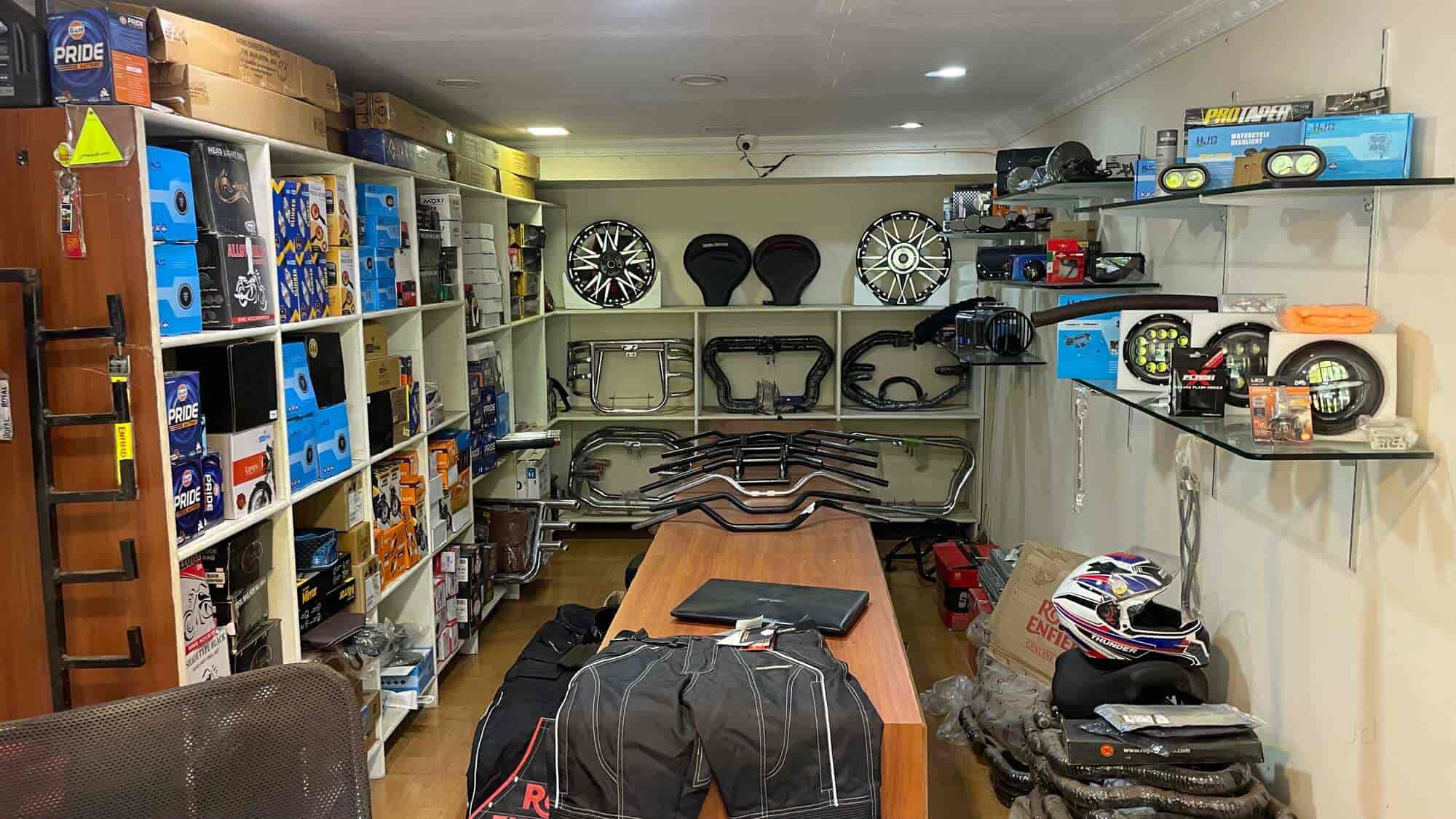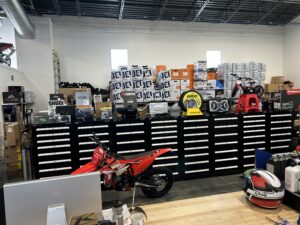Discover High Quality Moto Parts NZ for All Your Motorcycle Needs
Discover High Quality Moto Parts NZ for All Your Motorcycle Needs
Blog Article
Grasping Motorcycle Gears: How to Optimize Your Riding Experience
In the realm of motorcycling, mastering the art of equipment manipulation is essential for enhancing your riding efficiency. Properly comprehending and using motorcycle gears can significantly impact velocity, control, and gas performance, changing a typical experience into a smooth, exciting trip. By incorporating precise shift timing and adapting gear option to numerous road problems, bikers can ensure ideal engine performance and safety and security. The subtleties of clutch control, throttle sychronisation, and equipment auto mechanics beckon a deeper exploration, promising to open the full capacity of your machine. Exactly how can these strategies be utilized to truly optimize your riding experience?
Recognizing Equipment Mechanics
At the core of motorcycle dynamics, equipment technicians play a crucial function in converting engine power into movement, ultimately determining speed and control. The gear ratios, carefully developed, identify the partnership between engine transformations and wheel turns, impacting acceleration and gas performance.
Understanding gear mechanics begins with identifying the value of the transmission, which houses multiple equipments of varying sizes. These equipments engage through a process known as meshing, where teeth of different equipments involve to transmit power. The precision of this communication is vital; any type of imbalance or damage can result in inefficient power transfer, impeding performance. Furthermore, the plan and dimension of equipments influence the bike's capability to deal with various lots and speeds.
In addition, the idea of gear moving is integral to optimizing performance. Smooth and prompt changes guarantee that the engine operates within its ideal power band, stopping unnecessary pressure and boosting durability (motocross gear). By understanding these mechanical ins and outs, bikers can attain an unified blend of control, efficiency, and power, raising their riding experience
Timing Your Shifts
Shift timing mastery is vital for maximizing bike efficiency and improving the riding experience. Correctly timed shifts ensure that the engine operates within its optimal power band, which is critical for maintaining control, achieving smooth acceleration, and making sure the long life of the motorcycle. Riders have to develop an instinctive sense of when to move equipments, which involves comprehending the relationship in between engine changes per minute (RPM) and speed.
To understand shift timing, pay close focus to the engine's audio and really feel, as these offer crucial hints regarding when to alter gears. The suitable change point typically takes place when the engine comes close to the upper variety of its power band without reaching the redline. Changing prematurely can lead to an absence of power, while shifting far too late might trigger unneeded engine strain
In addition, road problems and riding style influence shift timing. In city settings, smoother and extra regular shifts might be needed to browse website traffic efficiently. On the other hand, during highway riding, less shifts at greater rates can be better. Practicing in varied environments will certainly improve your capacity to time shifts precisely, inevitably boosting your riding experience to an expert degree.
Enhancing Gas Effectiveness
While mastering motorbike gears is essential for performance, enhancing gas performance is similarly crucial for both environmental and economic factors. Ideal fuel consumption not just reduces operational expenses yet likewise minimizes the ecological footprint of riding. To accomplish this, one must understand the detailed connection in between equipment choice and engine efficiency.
To start with, picking the appropriate gear at proper rates can significantly affect gas consumption. Riding in a greater gear at reduced rates can lead to engine lugging, which is destructive to both gas economy and engine health and wellness. Conversely, riding in reduced gears at high speeds results in unnecessary gas consumption. Therefore, preserving an optimal equilibrium by shifting gears in alignment with roadway problems and expected maneuvers is crucial.
In addition, routine maintenance plays a critical role in gas performance. Guaranteeing that the motorbike is well-tuned, with tidy air filters and correctly inflated tires, can improve aerodynamics and visite site decrease gas wastefulness. Moreover, adopting a riding design that accepts gradual velocity and smooth deceleration can add to much better gas economic climate.

Strategies for Smooth Transitions
Accomplishing smooth equipment shifts is fundamental to boosting the riding experience and guaranteeing the longevity of a bike's transmission system. Proper equipment moving not only adds to a seamless ride however also minimizes damage on the mechanical elements. To master the art of smooth transitions, cyclists need to focus on a couple of key methods.

Secondly, clutch control plays a critical function. Involving and disengaging the clutch efficiently calls for practice. The clutch lever must be launched gradually, enabling for a smooth transfer of power from the engine to the wheels without causing a jolt or abrupt movement.

Adjusting to Roadway Problems
Navigating diverse roadway problems is an essential ability for any kind of motorcyclist intending to preserve control and security. Whether you're riding on wet motorcycle apparel shops near me surfaces, gravel roadways, or browsing doglegs, your capacity to adjust your equipment use and riding strategy is extremely important. Understanding how to adjust your equipments suitably can substantially affect traction and stability, ensuring a more secure trip.
In comparison, when riding on gravel or uneven terrain, reduced equipments are more suitable. Reduced gears supply better control and enable you to respond more promptly to unexpected adjustments in the road surface.
Sharp contours demand exact equipment administration to stabilize rate and control. Downshifting before getting in a curve can help keep energy while guaranteeing the bike remains steady throughout the turn. Regular practice in different problems boosts your ability to anticipate and react to modifications in cool motorcycle helmet designs roadway appearance and incline.
Final Thought
Understanding bike gears substantially boosts the riding experience by improving velocity, fuel, and control effectiveness. A thorough understanding of gear mechanics and accurate shift timing makes sure the engine runs within its optimum power band, while smooth changes through effective clutch and throttle coordination increase comfort and performance. Adapting gear choice to different road conditions, such as utilizing higher gears on wet surfaces and lower gears on crushed rock, more boosts handling and safety. Ultimately, these abilities boost the total trip.
Comprehending gear mechanics begins with identifying the value of the transmission, which houses several gears of differing dimensions. These gears interact via a process known as meshing, where teeth of various gears engage to transfer power (motocross parts nz). Gentle adjustments to the throttle throughout gear shifts can protect against jerky motions and maintain a constant riding rate
Whether you're riding on damp surfaces, crushed rock roads, or browsing sharp turns, your ability to adjust your gear use and riding technique is extremely important. Adapting equipment selection to numerous road problems, such as using higher equipments on wet surface areas and lower equipments on crushed rock, additional boosts handling and safety.
Report this page